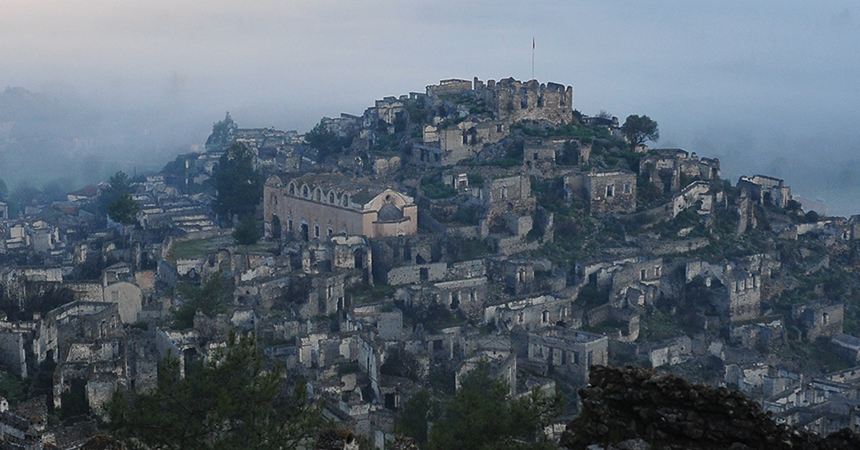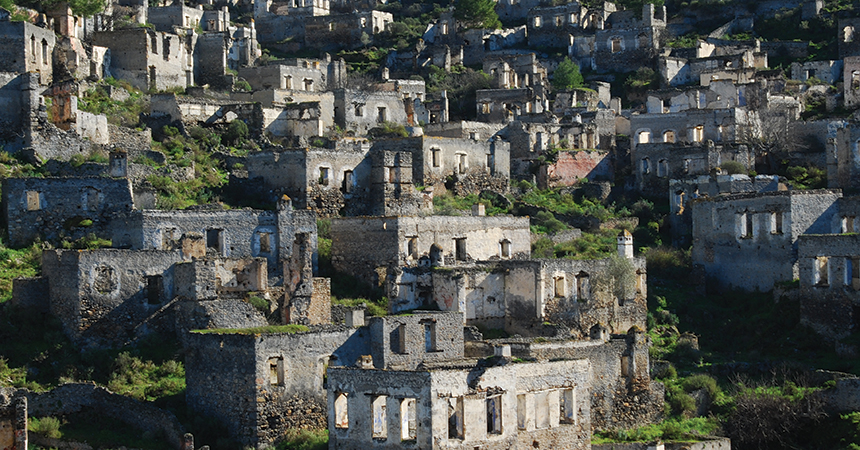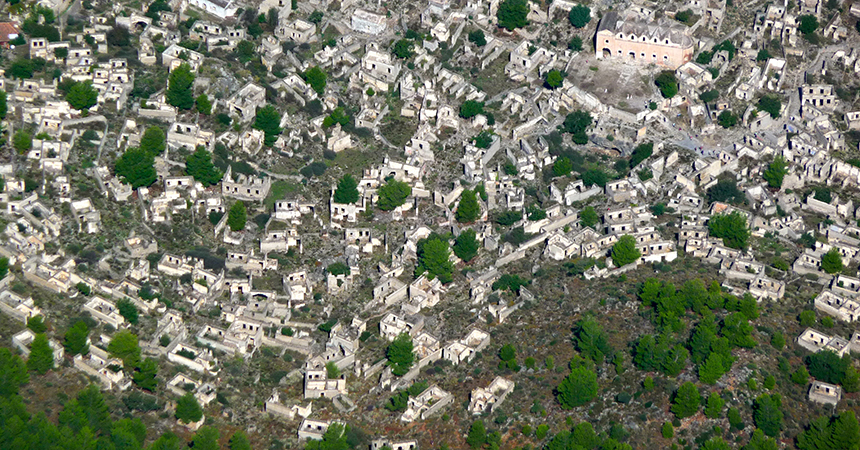Kaya Village
Kaya is very nostalgic, with its narrow winding lanes & stone cottages.
Former Levissi lies just 10 km from Oludeniz. It was built on the site of the ancient Lycian city of Karmylassos and was known as ‘Levissi’.
After the Turkish War of Independence, the Turkish and Greek governments agreed on a population exchange. Greek orthodox believers moved to mainland Greece….
Their houses, churches and chapels still partly intact range panoramically round the slopes of three hills overlooking the Kaya plains. The site is now preserved as a ‘museum village’. The local Turks farm the land, produce apricots and almonds and provide visitors with local foods. Accommodation can be found in superior villas, stone cottages, apartments, and even tents. Barbeques, local wines and herb pancakes are all specialities of Kaya Village.
Some of the old houses have been turned into workshops and ateliers which offer courses in painting, photography and pottery.
Camels and ponies are available for riding. There is a good dolmus service via Ovacik 6 times daily.
Kaya is very nostalgic, with its narrow winding lanes, stone cottages; ancient maple trees all verging onto the central teahouse. For those who enjoy walking there are marked paths which lead to Oludeniz, Cold Water Beach and the Afkule monastery among others.
A Tale of A Village
It is early evening I think, because people seem to be at home and I smell smoke and see it rising from the hearths of some 400 houses… Below me on the flat plain lie fields of ripened cereal and fruit-heavy orchards which stretch away to a road which winds daringly up and over a slope to disappear into the pine trees. Beside one of the fields an impatient donkey brays to alert his owner that it is time to head home. Night is falling. Flat roofs topped by chimneys and shaded by vines trellised up the side of what must be water-cisterns. Cobbled lanes traveling like the vines, house to house, only diverting sideways from their straight ascent to give way to the roots of an old maple or a gnarled olive. Other-wise the symmetry is maintained. From level to level, from house to house the cobbles ascend with an occasional step on their climb upwards. I look west, terrace upon terrace, these houses rise to the brow of adjacent hills, and to the east more dwellings, all similar, all climbing up to the skyline of a further hill which is crowned by a perfect little white washed building.
At first in the gloom all the houses seem of equal size, two-storied rectangles with shuttered and paired windows. Slowly my eyes seek out some smaller buildings, their arched roofs rising above the flat ones. One appears through the haze much larger with mather-paintered walls, gabled roof and bell tower. From here a wide passageway bisects the settlement horizontally and leads down to a similar building on the edge of the plain. I can see lights appear through cracks in the shuttered houses, and smell cooking, probably heated olive oil but cannot hear what is said behind the closed doors.
Suddenly from the tower a bell sounds out, echoed by another further off… As the donkey brays again, I rub my eyes. There are no longer lights in the houses, and the shutters are not closed. In fact the houses do not have windows and the hearths are empty… I crush a twig of oregano between my fingers. The braying donkey becomes the horn of the dolmus announcing departure for Oludeniz. I stumble down the steep path to the road and hail the minibus. I had intended to walk down from Kaya village to the Lagoon. That was until the past became present and I was in Levisii. I wondered what had happened after the bells tolled. The donkey’s owner probably went to fetch him.





